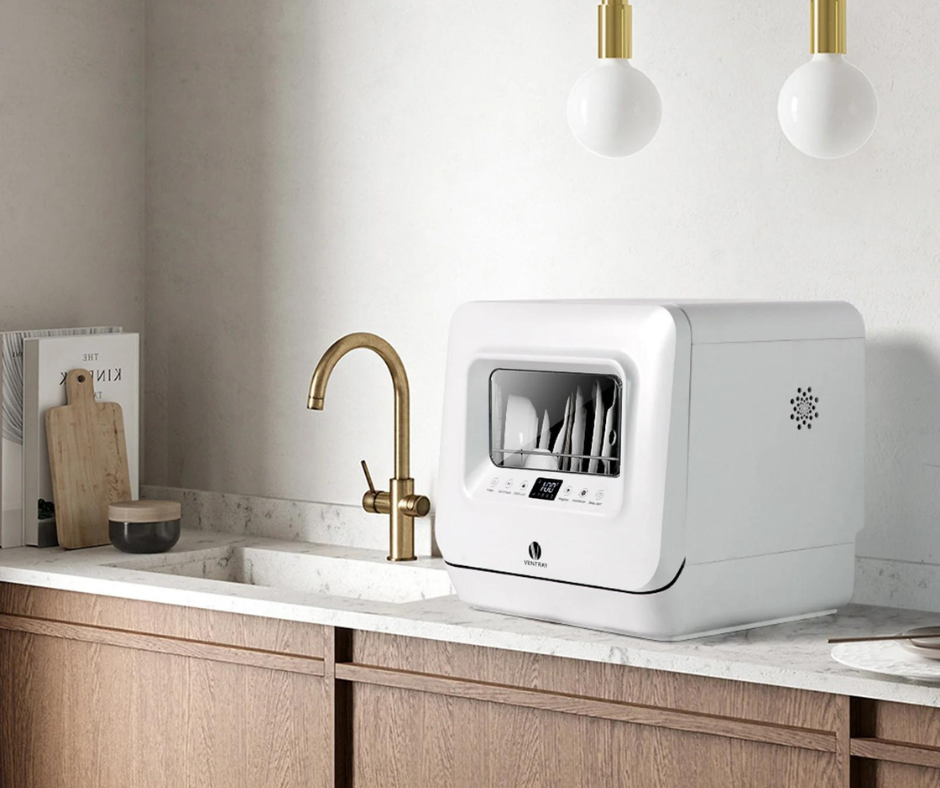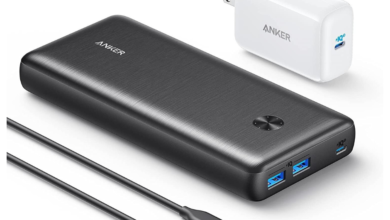Portable Dishwasher

Introduction:
A portable dishwasher is a compact kitchen appliance that simplifies dishwashing. Unlike built-in dishwashers, it’s movable and connects to your sink, making it a flexible solution for homes with limited space or for renters. It offers various cleaning cycles and settings, effectively handling a variety of dishes. Portable dishwashers save time and water, making kitchen cleanup more convenient.
Working Of Portable Dishwasher:
The working of a portable dishwasher is a straightforward process designed to make dishwashing efficient and convenient. Here’s a step-by-step overview of how a typical portable dishwasher operates:
- Loading:
Begin by arranging your dirty dishes in the dishwasher’s interior racks. Most portable dishwashers have designated spaces for plates, glasses, cutlery, and larger items like pots and pans. - Detergent:
Add dishwasher detergent to the detergent dispenser compartment. The amount of detergent required varies depending on the dishwasher and the chosen wash cycle. Follow the manufacturer’s guidelines for the correct detergent type and quantity. - Water Connection:
Move the portable dishwasher close to your kitchen sink. Connect the dishwasher’s water inlet hose to your sink faucet. This hose is usually flexible and easy to attach. Ensure a secure connection to prevent any leaks. - Drainage:
Connect the dishwasher’s drainage hose to your sink or a suitable drain outlet. This hose allows used water to be pumped out of the dishwasher and into the drain. - Power Supply:
Plug the dishwasher into an electrical outlet. Portable dishwashers typically run on standard household voltage. - Selecting Wash Cycle:
Set the dishwasher to the desired wash cycle. Most models offer options like normal, heavy-duty, light, and eco-friendly cycles. You can also choose additional settings, such as sanitize or delay start, depending on the dishwasher’s features. - Starting the Cycle:
Press the start button to initiate the wash cycle. The dishwasher’s internal components, such as the pump, spray arms, and heating elements, will then begin to operate. - Water Inlet:
The dishwasher’s pump draws water from the sink through the inlet hose. The water is then directed to the spray arms for even distribution. - Draining:
As the dishwasher’s cleaning process progresses, the used water is pumped out through the drainage hose and into the sink or drain. - Rinsing and Drying:
Once the cleaning cycle is completed, the dishwasher will typically go through a rinse cycle, which removes any remaining detergent. Some models also have a drying phase, where a heating element or a fan helps dry the dishes. - End of Cycle:
The dishwasher will signal the end of the cycle, often with a beep or indicator light. At this point, you can open the door, unload the clean, dry dishes, and enjoy the convenience of a dishwasher’s work well done.

Uses Of Portable Dishwasher:
Portable dishwashers are versatile appliances designed to simplify and enhance the dishwashing process. They offer a range of uses and benefits in various settings, including:
- Small Kitchens:
Portable dishwashers are ideal for compact kitchens where space is limited. They provide the convenience of a dishwasher without the need for permanent installation. - Rental Properties:
For renters, portable dishwashers are a valuable solution. They can be easily connected to the kitchen sink and removed when you move, making them a practical choice for temporary living spaces. - Flexibility:
These dishwashers can be wheeled to different locations within your kitchen, allowing you to adapt to changing needs or reconfigure your kitchen layout. - Efficiency:
Portable dishwashers offer efficient cleaning cycles, using less water and energy than manual dishwashing. They can save time and reduce the physical effort required for washing dishes. - Versatility:
These appliances can accommodate a variety of dish sizes and types, from plates and glasses to larger items like pots and pans. They often include multiple wash cycle options to suit different cleaning needs. - Water Conservation:
Portable dishwashers typically use water more efficiently than manual washing, contributing to water conservation efforts. - Convenience:
The automated cleaning process frees up your time for other tasks, allowing you to enjoy freshly cleaned dishes without the labor of handwashing. - Eco-Friendly Options:
Some portable dishwashers come with eco-friendly wash cycles that use less water and energy, making them a greener choice for environmentally conscious users. - Holiday and Entertaining:
They are especially helpful when hosting gatherings or dinner parties. With a portable dishwasher, you can quickly clean a large volume of dishes, glasses, and utensils after an event. - Secondary Dishwasher:
Some homeowners use portable dishwashers as a secondary unit in addition to their built-in dishwasher, providing extra capacity for busy times.

Conclusion:
In conclusion, the portable dishwasher is a versatile and efficient kitchen appliance that has revolutionized the way we approach dishwashing. Its adaptability, user-friendly design, and effective cleaning capabilities make it a valuable addition to both small and large kitchens, as well as in rental properties.




